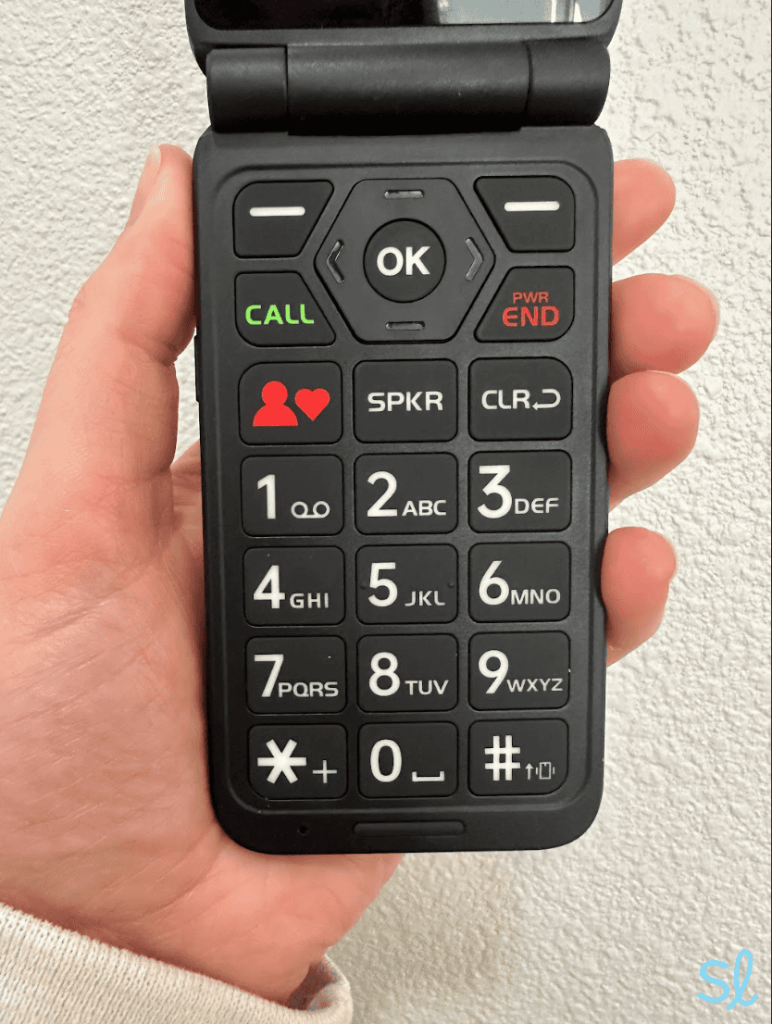Finding the best cell phone for seniors is becoming increasingly important, with 79% of adults ages 65 or older now owning smartphones as of the latest 2025 data.
Cell phones are invaluable in emergencies and help us stay connected with family and friends. However, as people age, devices that were once intuitive can become challenging to use. While choosing the right device might seem overwhelming, understanding the options is crucial. In fact, we’ve found that seniors have widely varying comfort levels with technology. Some older adults in their 70s and 80s are eager to try the latest smartphones with high-megapixel cameras, while others prefer simple cell phones for seniors with fewer features.
When searching for smartphones for seniors or easy to use cell phones for seniors, it’s important to consider specific needs. The right choice depends on whether your loved one is tech-savvy, prefers simplified functions, or requires specific accessibility features due to physical or cognitive issues. Additionally, if they’re comfortable with older phones, you’ll need to ensure their device supports 4G LTE networks, which will remain active until at least 2030.
In this guide, we’ll walk you through everything you need to know to choose the perfect phone for the senior in your life.
Understand What Seniors Really Need
Selecting the best cell phone for seniors starts with understanding their specific needs and limitations. Various factors influence which device will work best for each individual.
Cognitive, visual, and hearing considerations
Studies show that mobile device use among seniors is associated with better cognitive function. Mobile users score significantly higher on cognitive assessments (25.02 ± 4.14) compared to non-users (19.34 ± 5.21). Furthermore, seniors who use mobile devices experience fewer depressive symptoms.
Visual impairments require phones with specific features such as:
- Large, high-contrast displays
- Adjustable font sizes and magnification options
- Screen readers and text-to-speech capabilities
Concerning hearing challenges, approximately 65.3% of adults over 71 have hearing loss, yet merely 29.2% use hearing aids. Therefore, the ideal senior friendly cell phone should offer hearing-aid compatibility to prevent feedback and static issues. Loud, clear speakers are essential for those with mild hearing loss.
Daily usage habits and comfort with technology
Although many assume seniors avoid technology, research indicates 86% of online seniors spend at least six hours daily online and typically own five devices. Most importantly, 82% use their smartphones every day.
Seniors primarily use their devices for:
- Staying connected with family and friends (91%)
- Managing finances (87%)
- Monitoring health and wellness (73%)
Tech adoption varies considerably among older adults. Smartphone ownership among seniors has increased dramatically, rising from just 10% in 2011 to 61% in 2021. Nevertheless, confidence in digital literacy decreases with age—72% of adults aged 50-59 feel they have necessary digital skills, compared to only 61% of those 70+.
When a smartphone is too much
Occasionally, a smartphone becomes overwhelming despite their widespread adoption. For seniors with cognitive decline or those seeking simplicity, basic phones (sometimes called “dumbphones”) provide a welcome alternative.
The fundamental difference? Smartphones have app stores; basic phones don’t. These simpler devices focus on calls and texts with minimal additional features. They offer straightforward interfaces without complex menu systems or unnecessary extras.
For seniors with memory challenges, specialized phones like those with picture-based contacts or single-screen interfaces might be preferable. Additionally, some models include remote management capabilities, allowing caregivers to adjust settings and monitor battery levels.
Compare the Main Types of Senior Phones
The market offers various phone types for older adults, with 61% of seniors now owning smartphones and 29% preferring traditional cell phones. Understanding these options helps families make informed choices.
Flip phones vs. smartphones for seniors
Flip phones and smartphones each have distinct advantages for older adults. Flip phones typically offer longer battery life, sometimes lasting more than a week between charges, while smartphone users often search for outlets daily. Flip phones generally have physical buttons providing tactile feedback, making them ideal for seniors with arthritis or dexterity issues.
Smartphones, conversely, make texting easier with full on-screen keyboards and voice-to-text features, whereas most flip phones use the T9 format requiring multiple button presses for a single letter. Notably, smartphone ownership among seniors has increased dramatically in recent years, partly because many associate smartphones with improved life satisfaction through enhanced social connections.
Simple cell phones for seniors with no apps
For seniors seeking simplicity, basic phones (sometimes called “dumbphones”) focus primarily on calls and texts. Models like the Consumer Cellular IRIS Easy Flip ($60) provide straightforward functionality with large keys and built-in cameras. The Jitterbug Flip2 stands out with its dedicated urgent response button, charging station, and vertical list menu system that’s easily navigable.
These simpler devices offer practical benefits: lower monthly bills (no data charges), reduced hack risk, and interfaces that don’t overwhelm users with unnecessary features.
Senior-friendly smartphones with basic features
Several smartphones now incorporate senior-friendly designs. The Jitterbug Smart4 combines smartphone capabilities with an intuitive interface, featuring a list-style menu instead of app icons. With its 6.7-inch display and simplified navigation, it appeals to seniors transitioning to smartphones.
Apple’s iPhone SE represents another option with its Touch ID home button simplifying access. Both these devices offer hearing aid compatibility, voice commands, and safety features that enhance usability without sacrificing essential smartphone functionality.
Key Features to Look For
When selecting a cell phone for seniors, certain features can make devices significantly more accessible and user-friendly. Identifying these key elements ensures the phone meets specific needs.
Large buttons and high-contrast screens
For seniors with declining vision, screen size matters tremendously. Phones with at least 6.5-inch displays provide better visibility for aging eyes. Equally important is contrast – look for models offering black text on white backgrounds or customizable color schemes. The IRIS Easy Flip offers excellent contrast with options for regular or extra-large text sizes. Additionally, physical buttons should be well-spaced (approximately 2mm apart) to prevent accidental double-presses.
Hearing aid compatibility and loud speakers
Hearing aid compatibility is measured by M and T ratings, with M4/T4 being the highest possible rating. This compatibility prevents interference, static, and buzzing during calls. Speaker volume is equally crucial – the RAZ Memory Cell Phone reaches 125.6 dB on speakerphone, specifically designed for hearing-impaired users. Accordingly, many senior phones now offer volume boost features, allowing adjustment up to 40dB.
Emergency buttons and fall detection
Safety features remain vital for seniors living independently. Dedicated emergency buttons connect users directly to response centers or family members. Some models like the Snapfon ez4G include built-in fall detection. Once activated, these systems automatically switch to speakerphone mode and can alert up to five pre-selected contacts via call and text.
Voice commands and simplified menus
Voice activation simplifies phone operation for those with dexterity or vision challenges. The Jitterbug Flip2 incorporates Amazon Alexa, while the Jitterbug Smart4 uses Google Assistant for hands-free control. Simplified menu systems with list-based layouts rather than complex app grids enhance usability.
Battery life and wireless charging options
Battery performance varies widely between models. The Samsung Galaxy A16 offers exceptional longevity with 44 hours of talk time. Meanwhile, the Jitterbug Smart4 provides up to 37 hours of talk time. Wireless charging capabilities benefit users with arthritis or dexterity issues by eliminating the need to manipulate small charging cables.
Caregiver Tools and Support Options
Modern cell phones for seniors increasingly include tools for family members who provide care and support. These features create a balance between independence and safety.
Remote management apps for caregivers
Currently, specialized apps enable caregivers to manage senior phones remotely. Through platforms like RAZ Care, family members can add contacts, adjust settings, and monitor battery levels from their own smartphones. This proves especially helpful for seniors who live in different cities from their caregivers. Some systems even allow caregivers to set up auto-answer functions so they can check in without requiring the senior to answer.
GPS tracking and location sharing
Location tracking features offer substantial peace of mind. Many senior-friendly cell phones update location data every 15 minutes. Essentially, this technology ensures safety without constant supervision. Family members can receive alerts when seniors arrive at or leave designated locations.
Quiet hours and call restrictions
For seniors with memory issues, quiet hours prevent calls during inappropriate times. Caregivers can customize restricted calling periods for specific contacts, particularly useful for those who might make repetitive nighttime calls.
Loneliness alerts and reminders
Certain phones include “loneliness alerts” that notify caregivers when seniors haven’t participated in enough calls. Additionally, caregivers can set reminders that appear as sticky notes on the phone’s screen. These thoughtful features ensure seniors maintain social connections while receiving important medication or appointment reminders.
Conclusion
Choosing the best cell phone for seniors ultimately comes down to matching the device with individual needs and preferences. Finding the perfect balance between functionality and simplicity ensures older adults stay connected without feeling overwhelmed. Most importantly, the right phone can significantly improve a senior’s quality of life through enhanced social connections and greater independence.
Technology continues to evolve with seniors in mind, offering various options from simple flip phones to specialized smartphones. Each device type serves different requirements based on cognitive abilities, physical limitations, and technological comfort levels. Therefore, families should focus on specific features rather than brand names or latest models when making this important decision.
Additionally, accessibility features like large buttons, high-contrast screens, and hearing aid compatibility address common age-related challenges. Safety features such as emergency buttons and fall detection provide reassurance for both seniors and their loved ones. Furthermore, caregiver tools allow family members to offer support remotely while still respecting independence.
Before making a final decision, we recommend having honest conversations with your senior loved one about their needs and preferences. After all, the best phone is one they will actually use. Consider starting with in-store demonstrations where they can handle different models and test user interfaces firsthand.
Regardless of which phone you choose, patience during the transition period remains essential. Many seniors need time and repeated practice to feel comfortable with new devices. Still, the effort pays off when technology helps maintain vital connections to family, friends, and essential services. With the right device and proper support, seniors can embrace technology that enhances their daily lives rather than complicates them.

